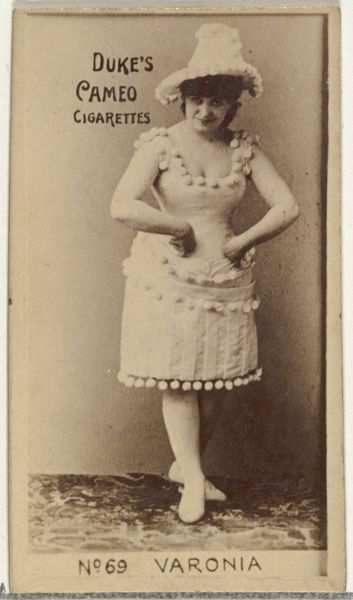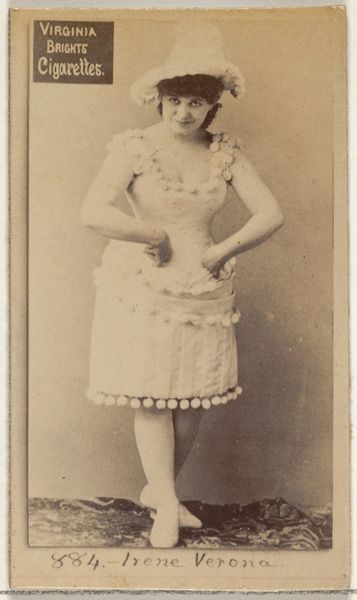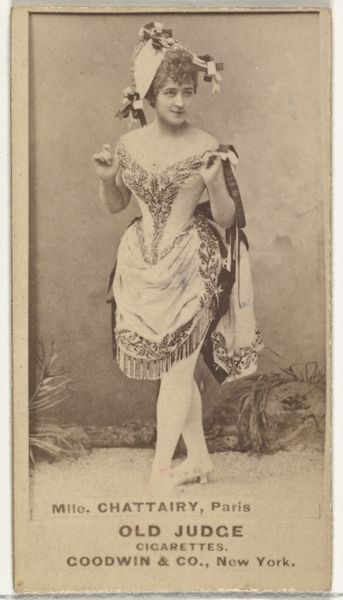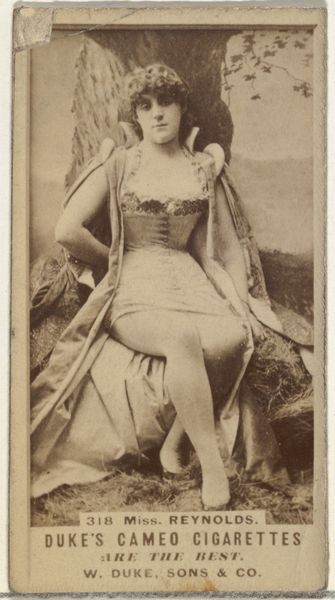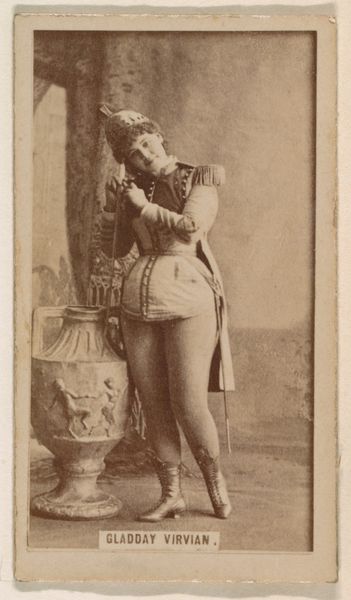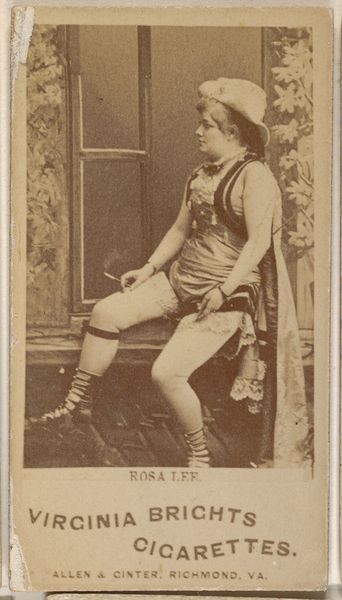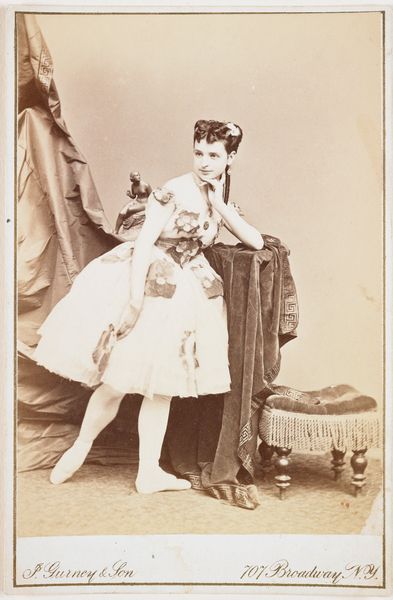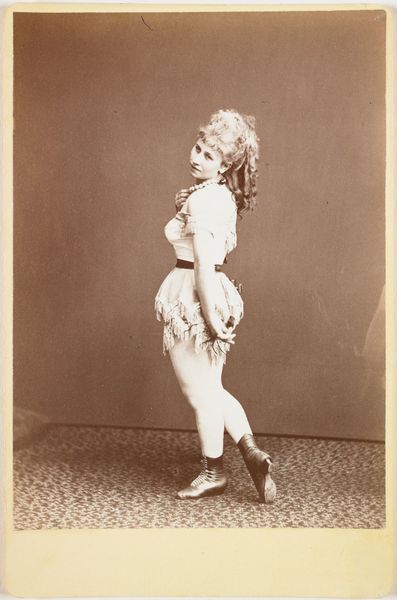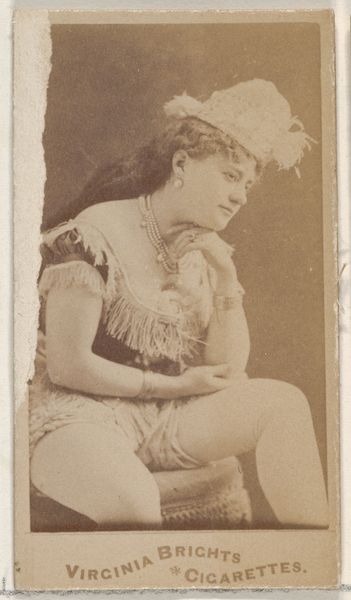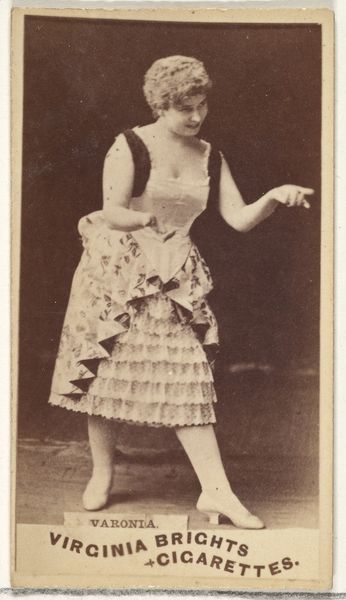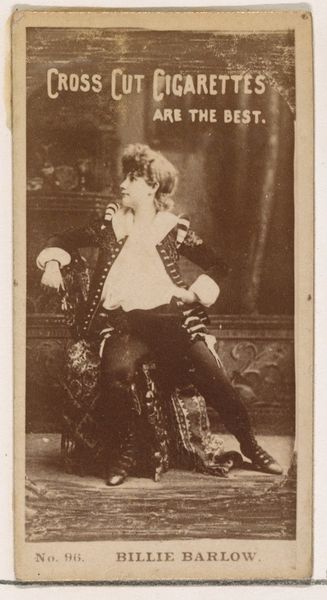
photography, gelatin-silver-print
#
portrait
#
archive photography
#
photography
#
historical photography
#
gelatin-silver-print
#
costume
#
united-states
#
erotic-art
Dimensions: 5 11/16 x 3 15/16 in. (14.45 x 10 cm) (image)6 3/8 x 4 3/16 in. (16.19 x 10.64 cm) (mount)
Copyright: Public Domain
Editor: So this gelatin-silver print is titled "The White Fawn" by Jeremiah Gurney, dating to around 1868. There's an undeniably theatrical feel to the photograph, almost staged. How do you interpret this work? Curator: Well, let's consider the cultural context. This image emerged during a period of rapidly expanding commercial photography. How do you think that impacts its subject matter and its reception by the public? Editor: I imagine photography, particularly portraiture, democratized art to an extent, made it more accessible to middle-class Americans... But, wouldn't that democratization also commercialize art forms? Curator: Precisely! The subject, likely a stage actress or dancer, and the deliberate costuming speak directly to that burgeoning market. This is erotic art playing with a mythical figure, all being made accessible by the popular medium of photography. Also, the legal text at the bottom refers to a court in the Southern District of New York. How does that geographical placement change the reading of this image? Editor: I guess with New York being such a big stage for theatricals and performing art, plus copyright registration. The location gives it an indication of distribution and further cultural impact. What considerations about copyrighting an image should be made today as opposed to back in the 1860s? Curator: A lot! Today we need to be thinking about the nature of reproduction online, digital property rights, who the actress was. Were they compensated properly for image circulation? Were they being exploited by the owner and distributer of the photography at the time? Editor: I never thought I could gain new perspective from just a single piece! There really are lots of things to analyze by carefully reviewing an image's history. Curator: Indeed. Considering art as a product of its socio-political moment allows us to understand both its immediate impact and lasting relevance.
Comments
No comments
Be the first to comment and join the conversation on the ultimate creative platform.

